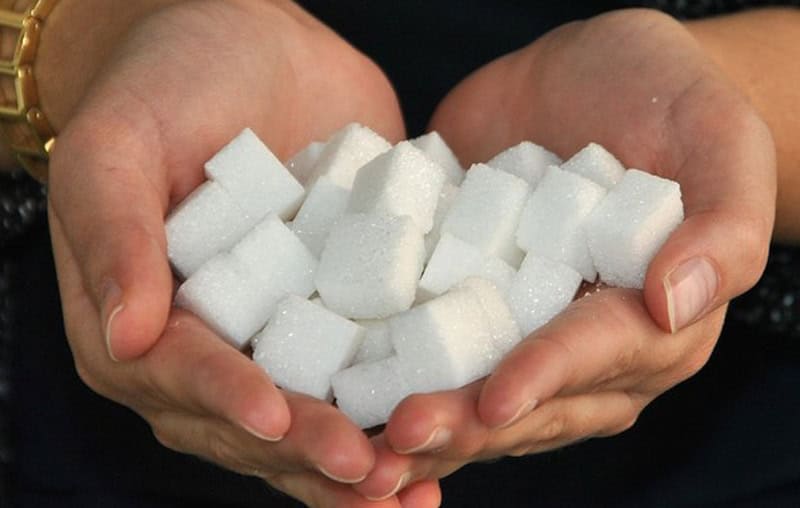When looking at beet sugar vs cane sugar, some argue that one melts better than the other.
Discover the Uses and Benefits of Beet Sugar Vs Cane Sugar in Your Daily Diet Regimen
Exploring the distinct high qualities of beet and cane sugar reveals greater than simply their sweetening capacities; it highlights their unique influence on health and cookeries. Beet sugar, understood for its refined flavor, is typically favored in fragile treats, whereas cane sugar, with its hint of molasses, includes splendor to robust dishes. Each type holds its own nutritional profile and glycemic effects, inviting a much deeper understanding of their duties in a balanced diet regimen and lasting intake practices.
Origin and Manufacturing Procedures of Beet and Cane Sugar

The unique climates and dirt kinds needed for expanding sugar beetroots and sugarcane add to differences in their growing practices and geographic distribution, affecting the business economics and sustainability of their production. beet sugar vs cane sugar.
Nutritional Contrast In Between Beet Sugar and Cane Sugar
Regardless of originating from different plants, beet sugar and cane sugar are nutritionally really comparable, both mostly containing sucrose. Each supplies about 4 calories per gram, equating to approximately 16 calories per teaspoon. Structurally, both sugars are made up of about 99.95% sucrose, with minimal quantities of other materials like moisture and trace element, which do not dramatically change their dietary accounts.

Inevitably, when picking between beet sugar and cane sugar based on nutritional web content alone, both deal similar advantages and downsides as they are basically kinds of the same particle-- sucrose, supplying quick power without various other nutrients.
Influence On Health And Wellness: Glycemic Index and Caloric Content
Discovering further into the impacts of beet sugar and cane sugar on health, it is crucial to consider their glycemic index and calorie content. The glycemic index (GI) of both beet and cane sugar is around 65, categorizing them as high-GI foods, which can Get More Info create quick spikes in blood glucose degrees.
Each kind of sugar consists of around 4 calories per gram, check my reference making their calorie content equivalent. For those keeping track of calorie intake, particularly when taking care of weight or metabolic wellness conditions, understanding this equivalence is vital (beet sugar vs cane sugar). Nonetheless, too much consumption of any high-calorie, high-GI food can add to wellness problems such as obesity, heart illness, and insulin resistance.
Environmental and Economic Factors To Consider of Sugar Production
Beyond wellness impacts, the production of beet and cane sugar also increases substantial ecological and financial problems. Sugar beet farming often tends to call for cooler environments and has a lower geographical footprint compared to sugar cane, which thrives in exotic areas.
In addition, using pesticides and fertilizers in both top article beet and cane sugar cultivation can lead to dirt destruction and air pollution, additional impacting biodiversity and local water bodies (beet sugar vs cane sugar). The selection in between cultivating sugar beet or cane commonly pivots on local environmental problems and economic factors, making the sustainability of sugar manufacturing a complicated issue
Culinary Applications and Flavor Distinctions
While the ecological and financial facets of sugar production are indeed substantial, the option in between beet and cane sugar likewise affects culinary applications and taste profiles. Beet sugar, acquired from the sugar beet plant, is known for its extremely neutral taste.
Walking stick sugar, removed from sugarcane, frequently preserves molasses traces, which give a distinct splendor and deepness. The mild variant in dampness material in between beet and cane sugar can influence the texture and consistency of dishes, making cane sugar a preferred choice for specific recipes that profit from its unique residential or commercial properties.

Verdict
In verdict, both beet and cane sugar have distinctive beginnings and production processes, offering comparable dietary profiles with slight distinctions in salt material and flavor. While their effect on wellness, specifically pertaining to glycemic index and calories, is similar, the option between them often comes down to ecological, economic elements, and specific cooking requirements. Understanding these aspects can assist consumers in making informed choices that line up with their health and wellness objectives and taste preferences.